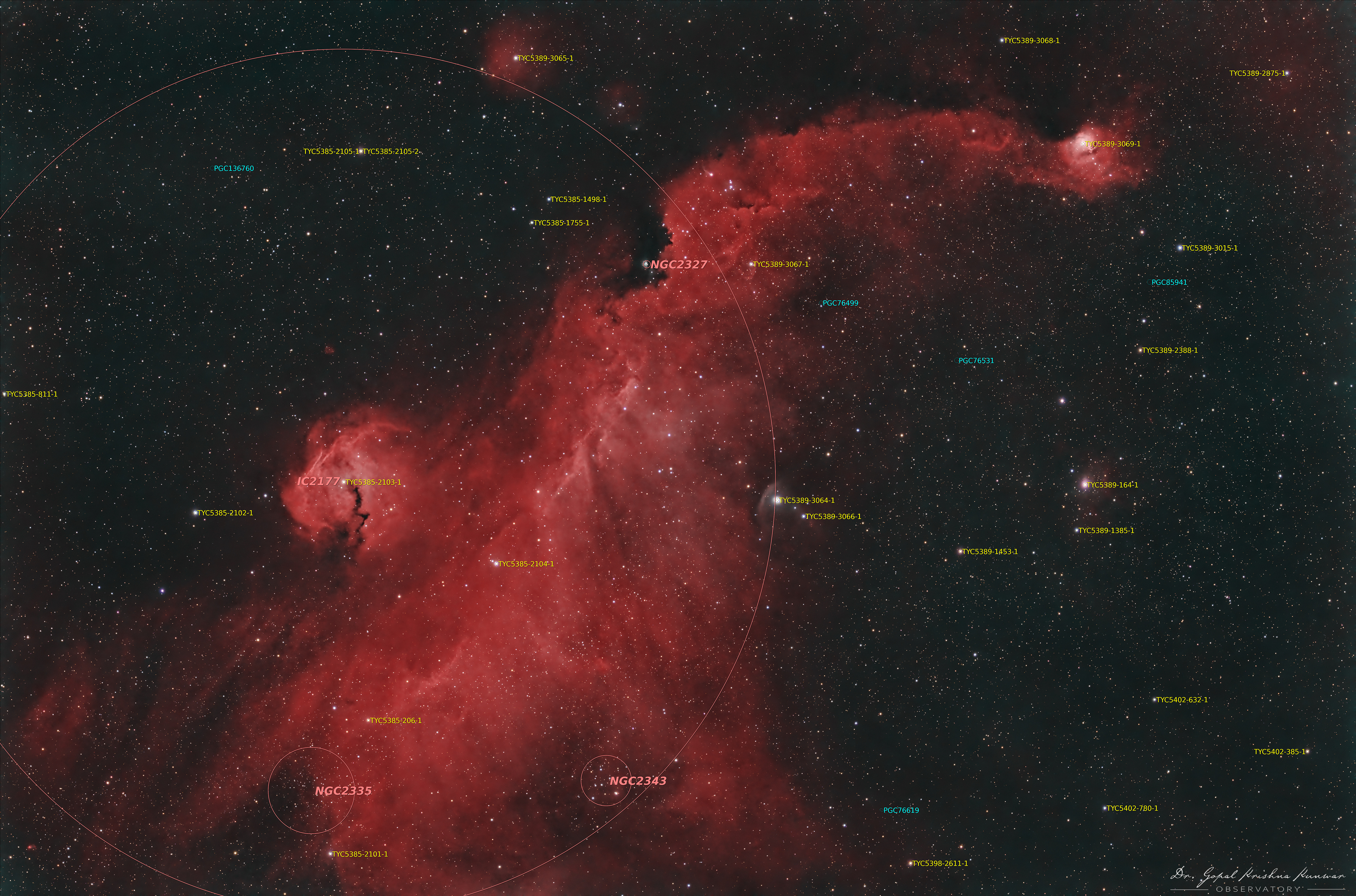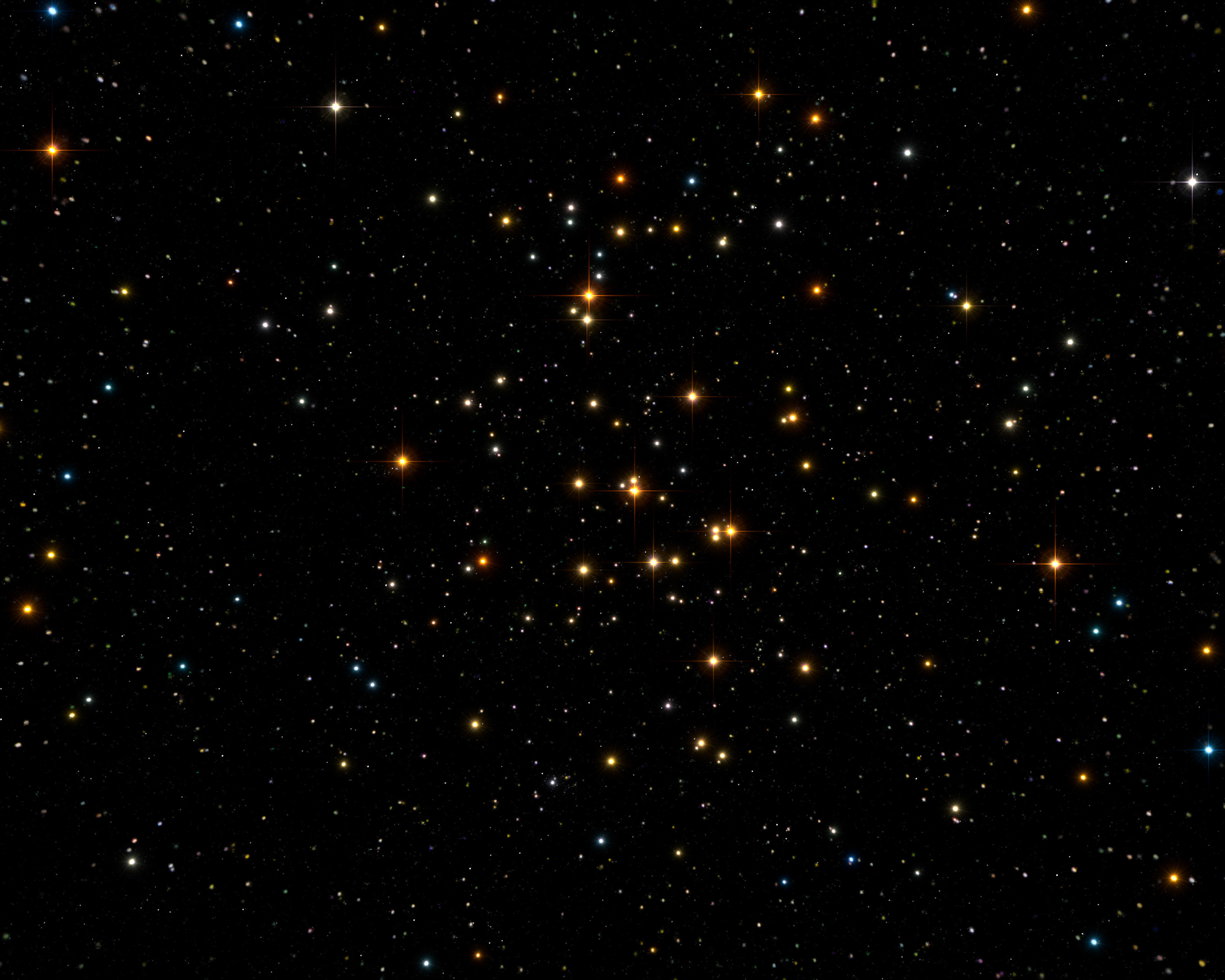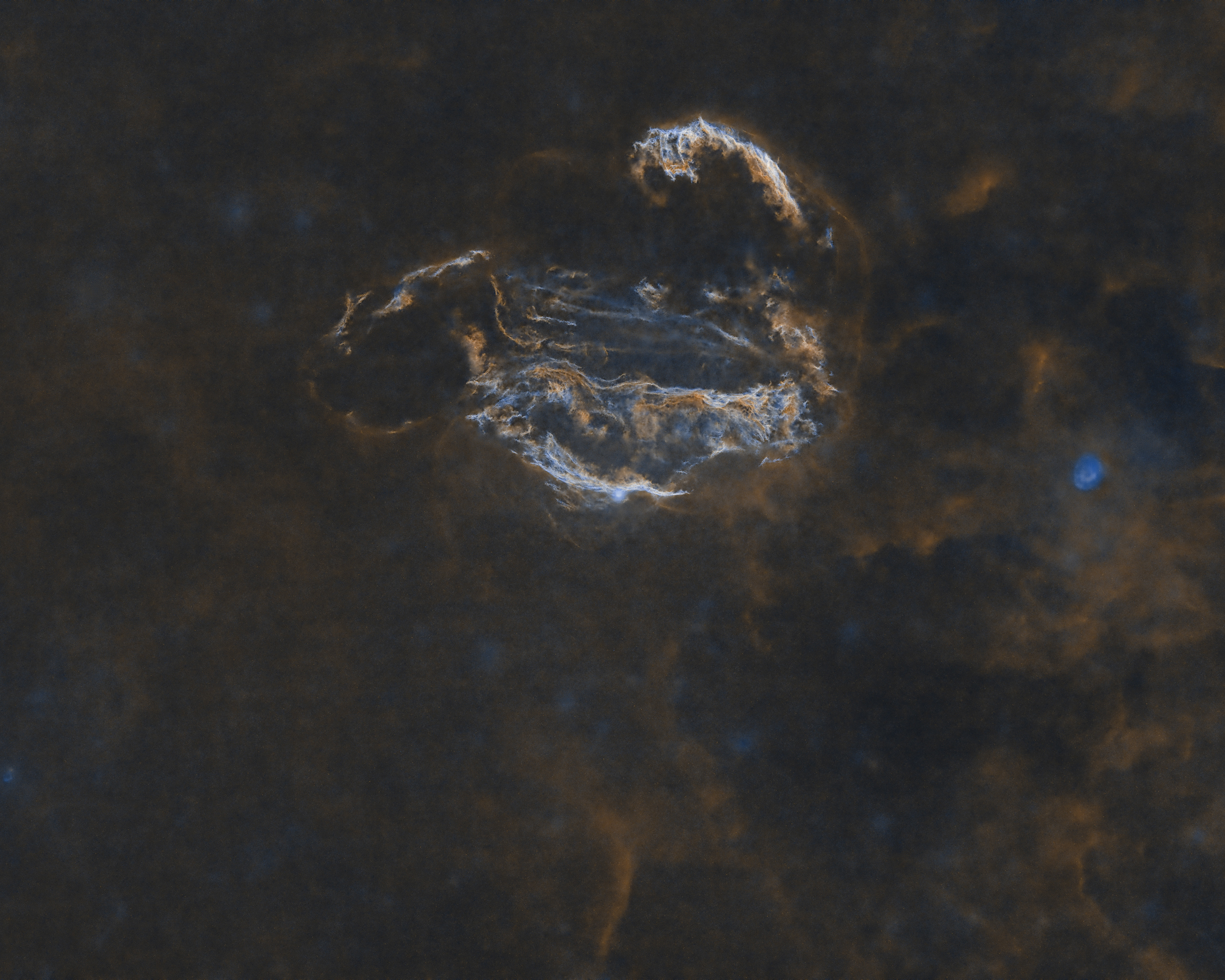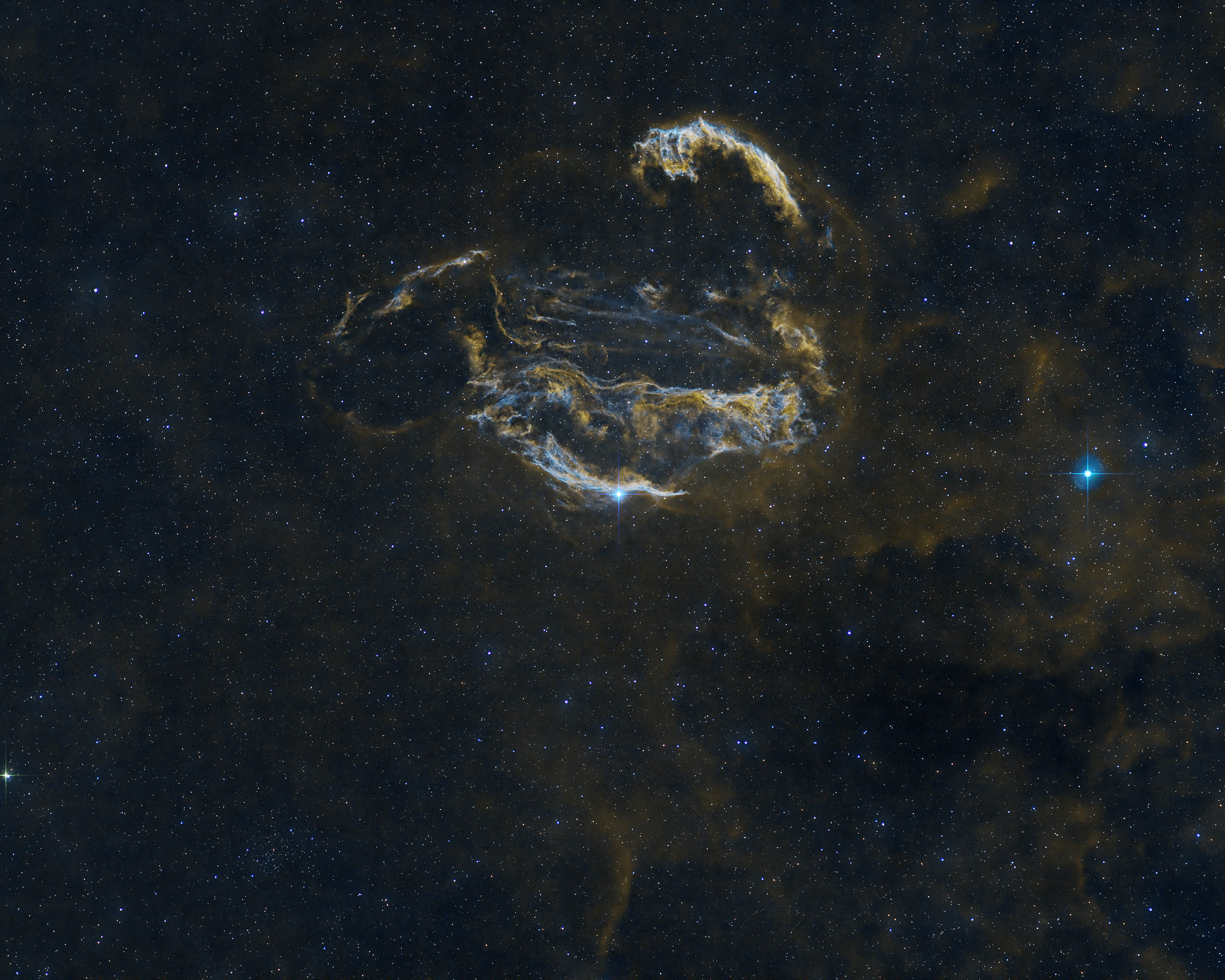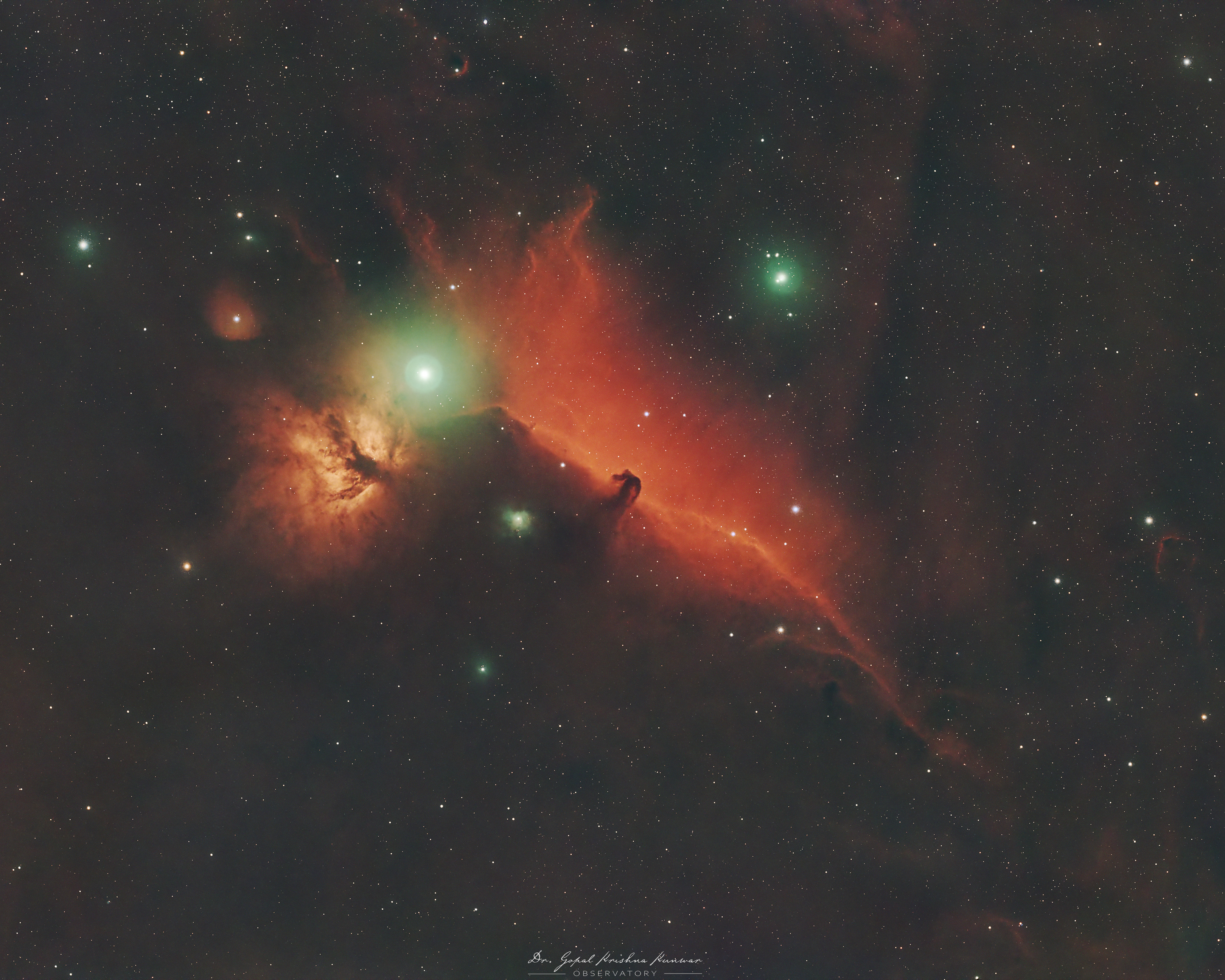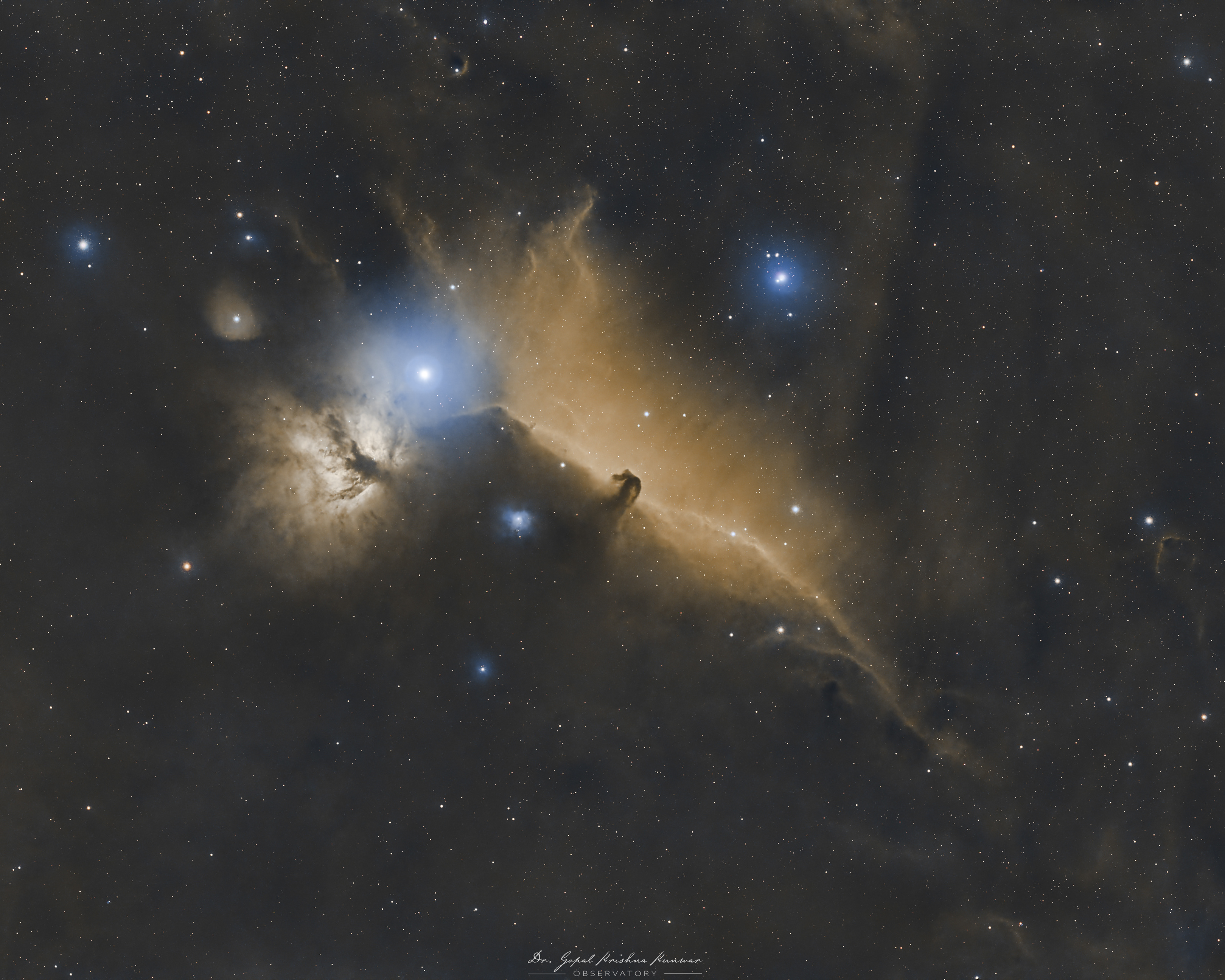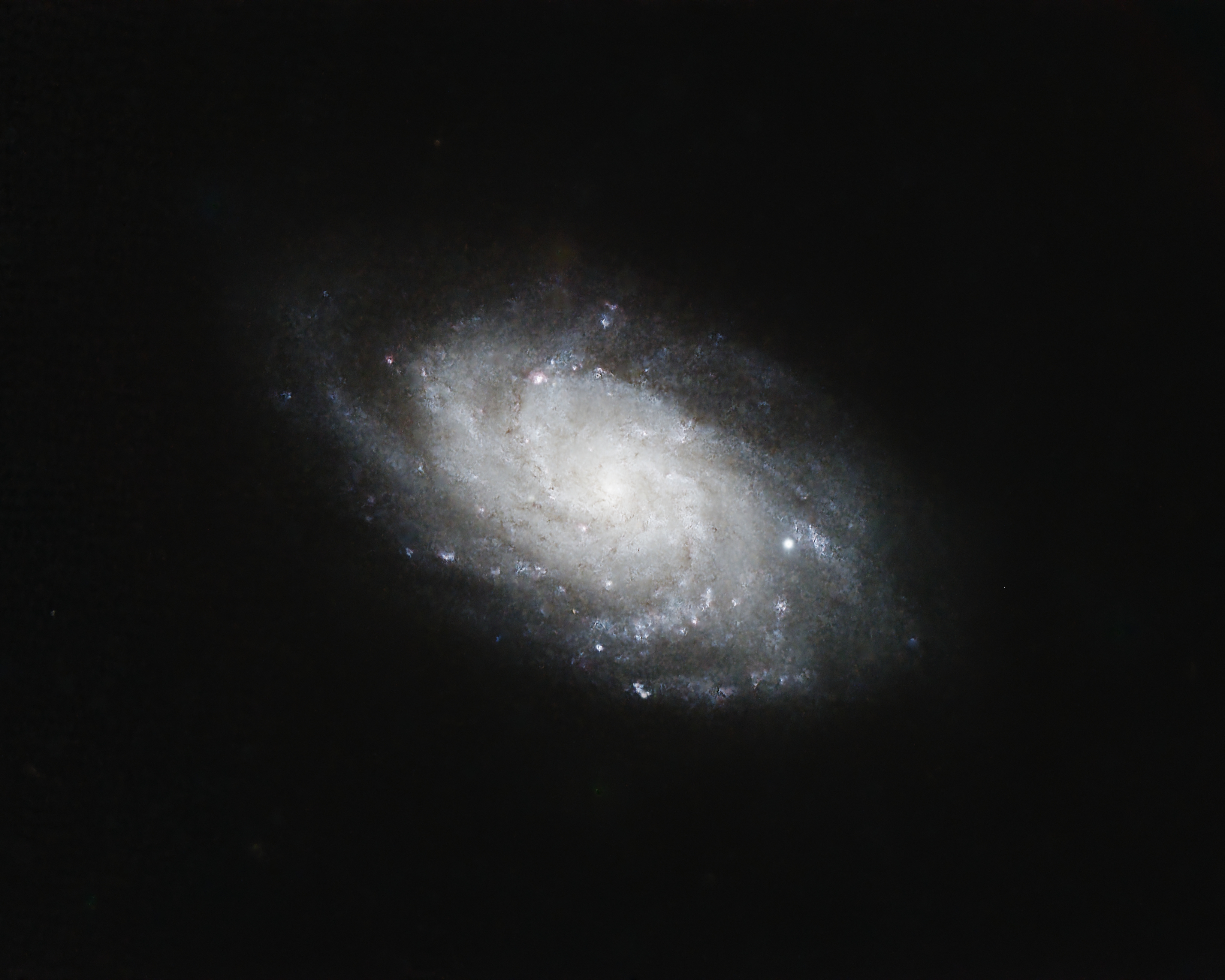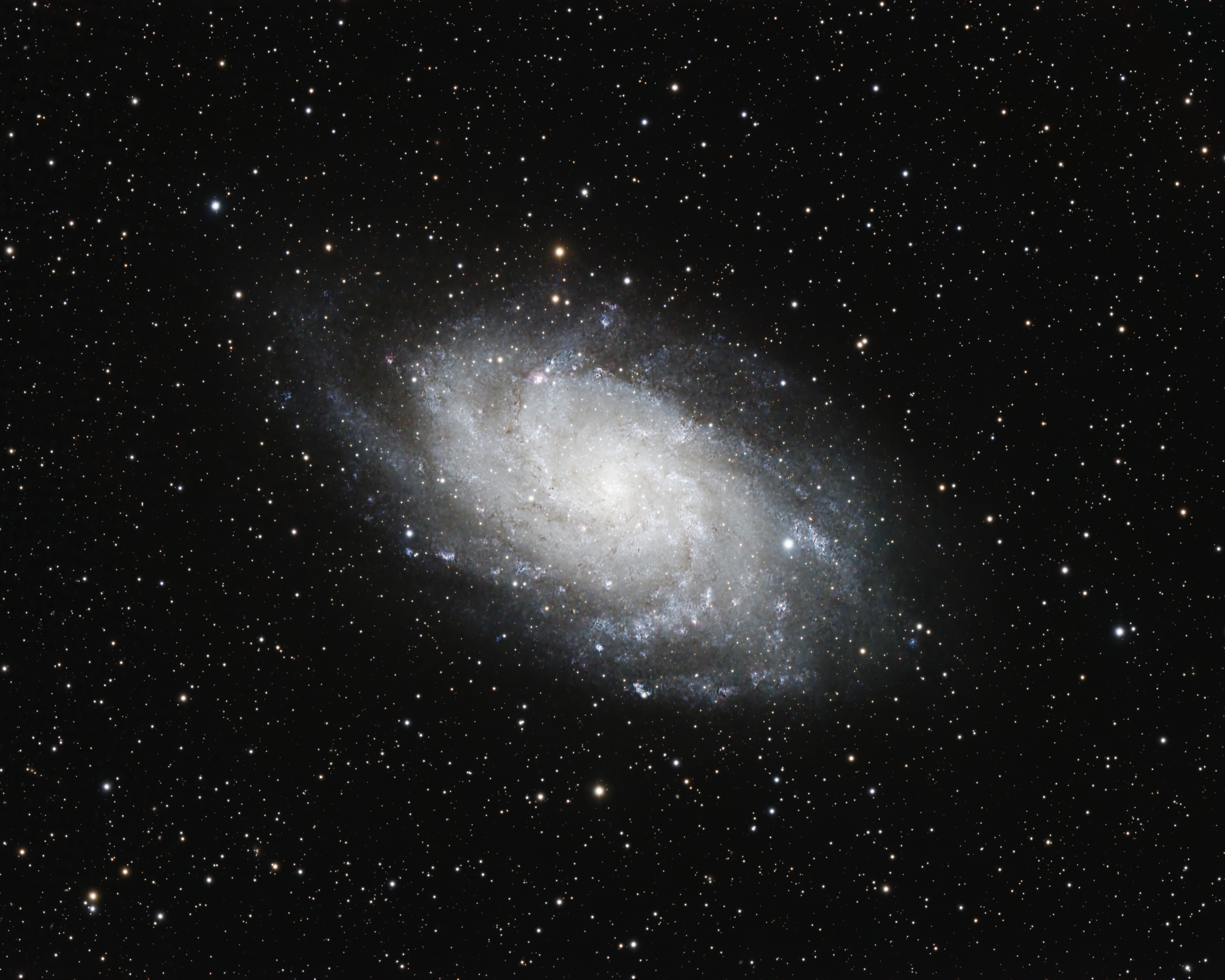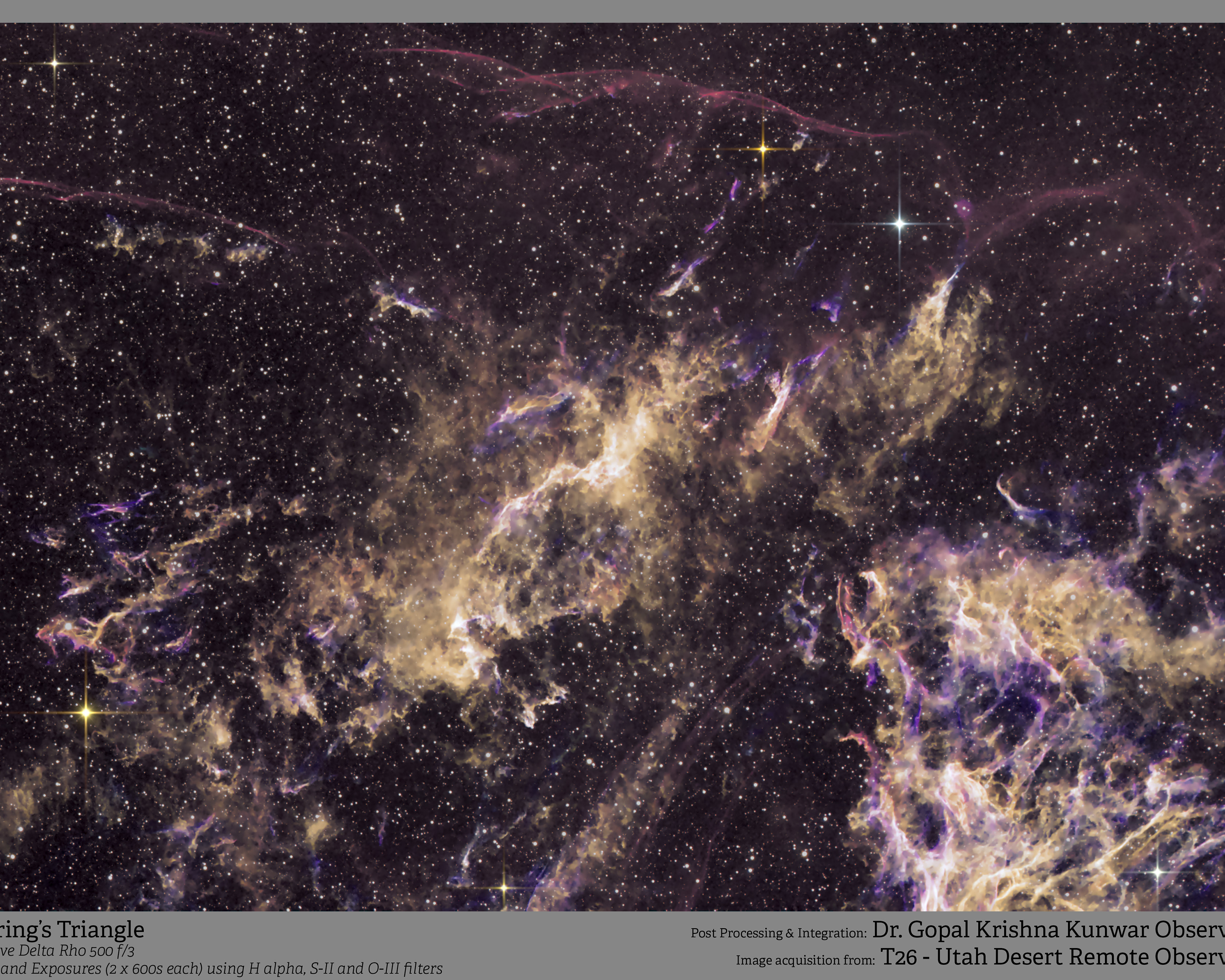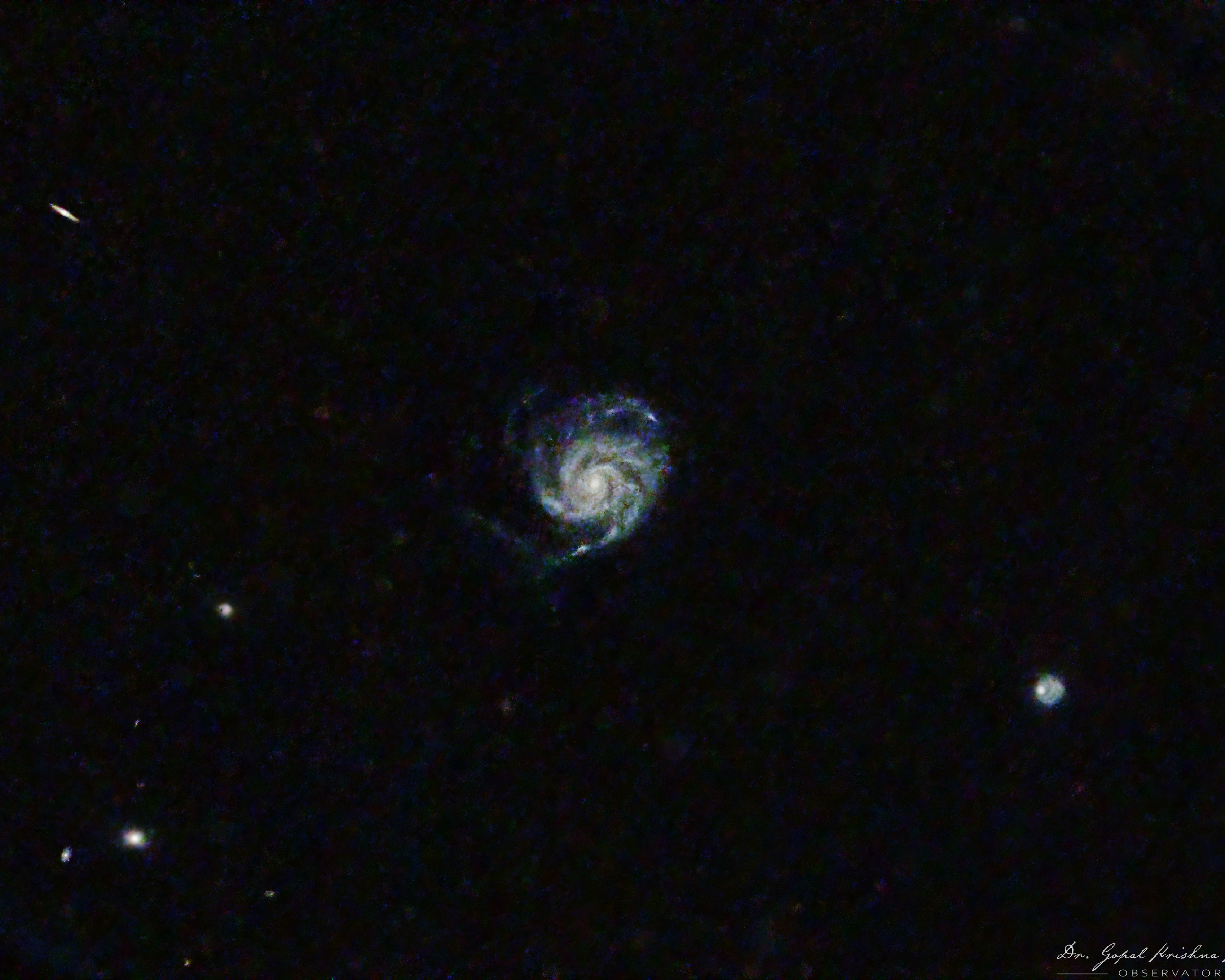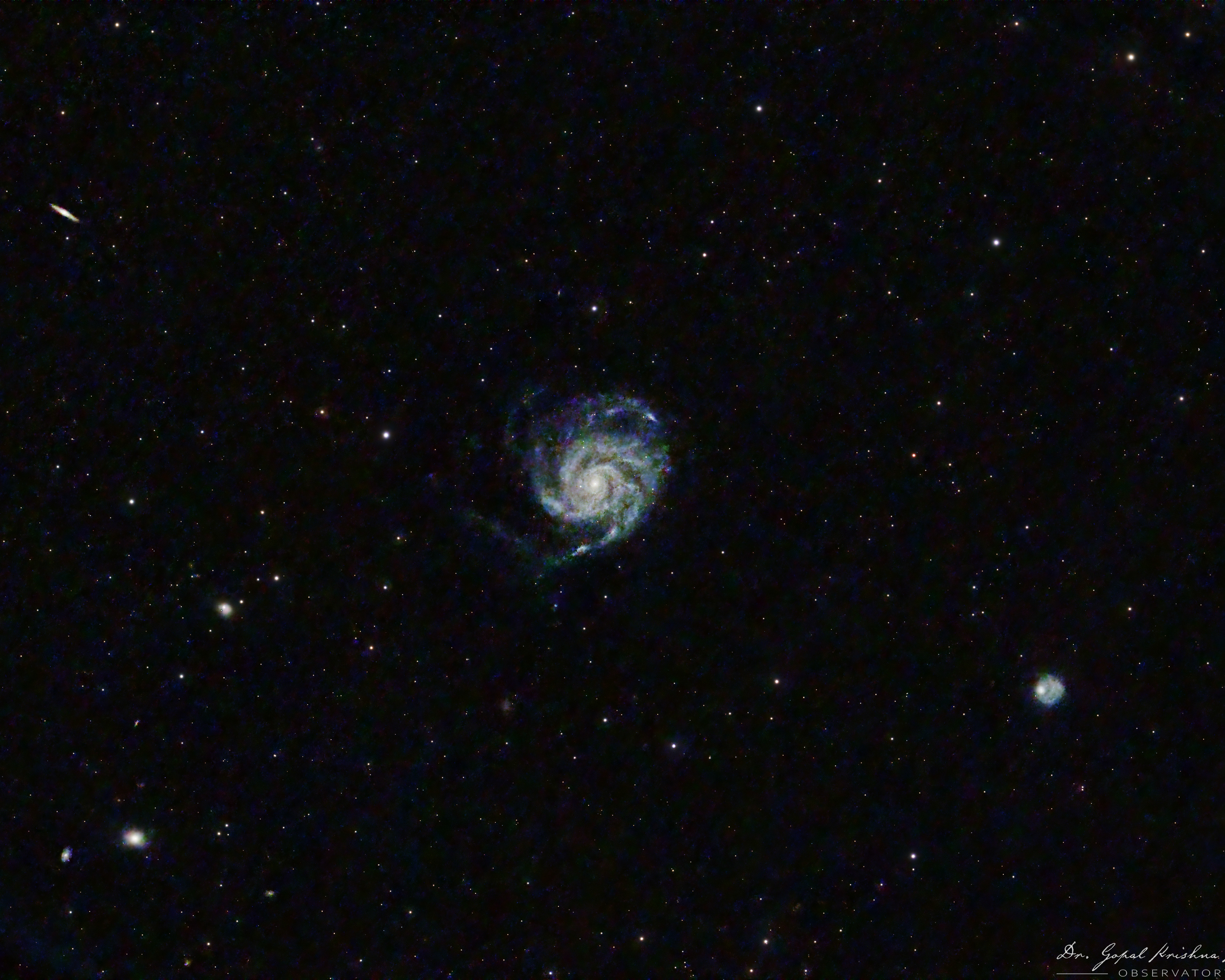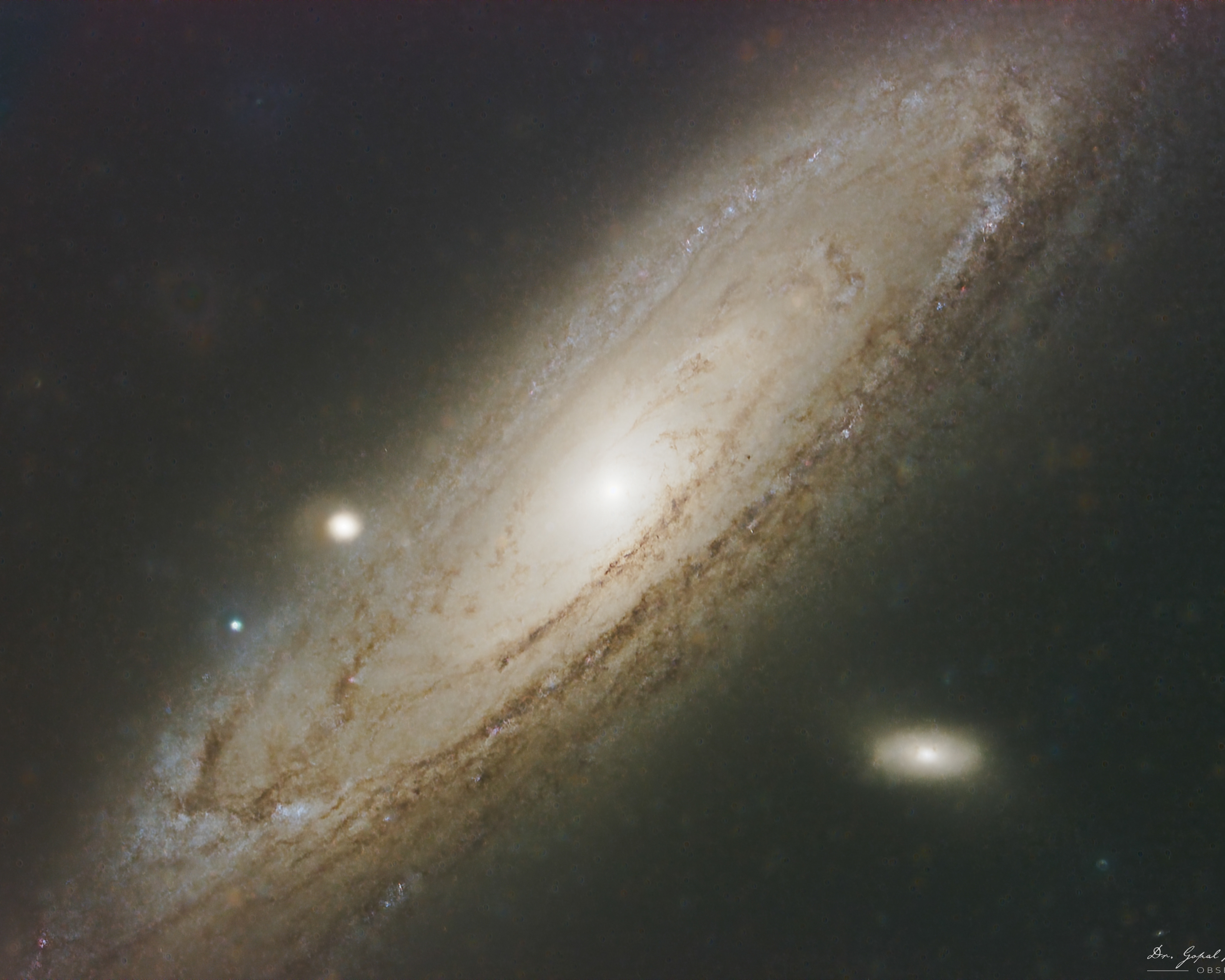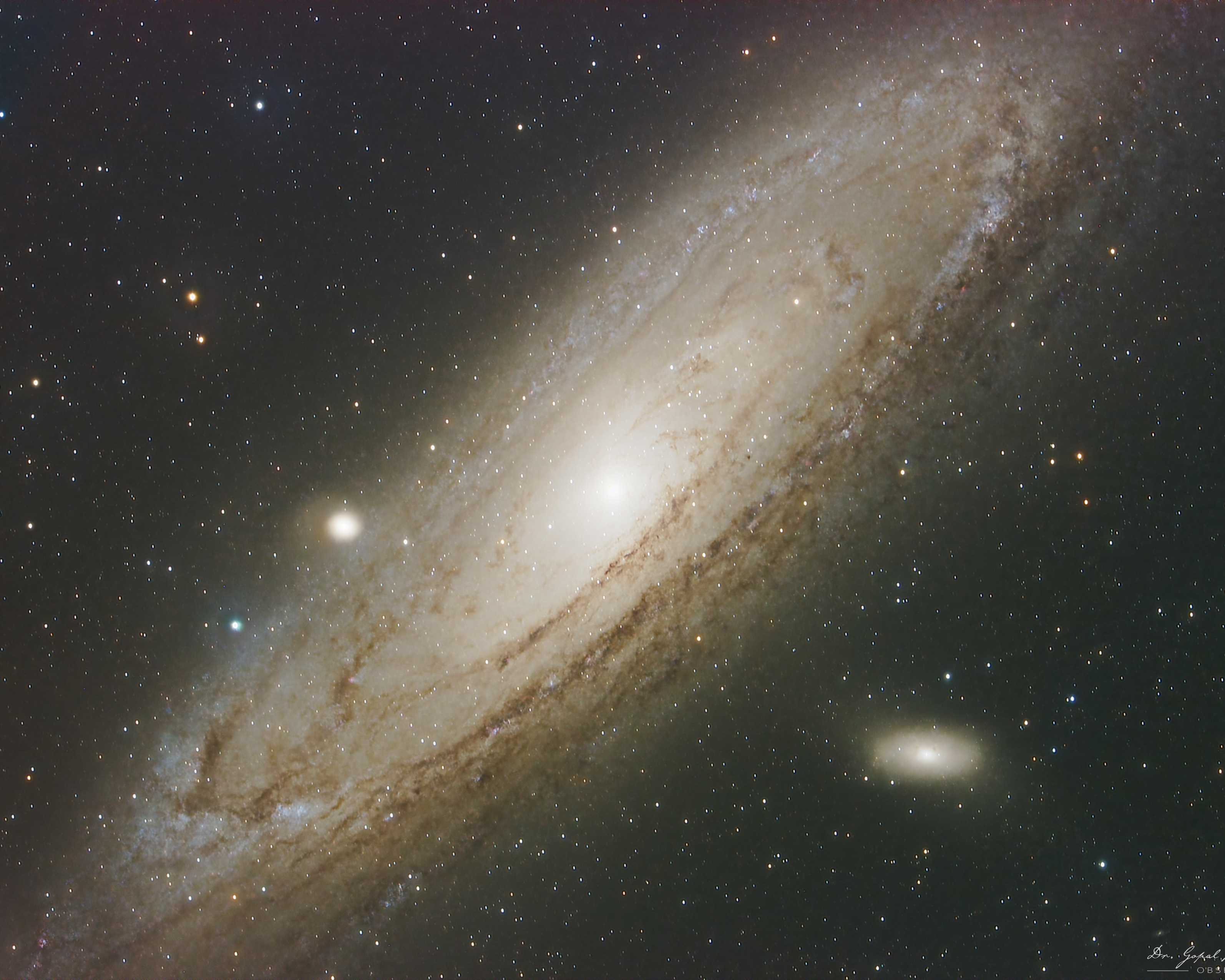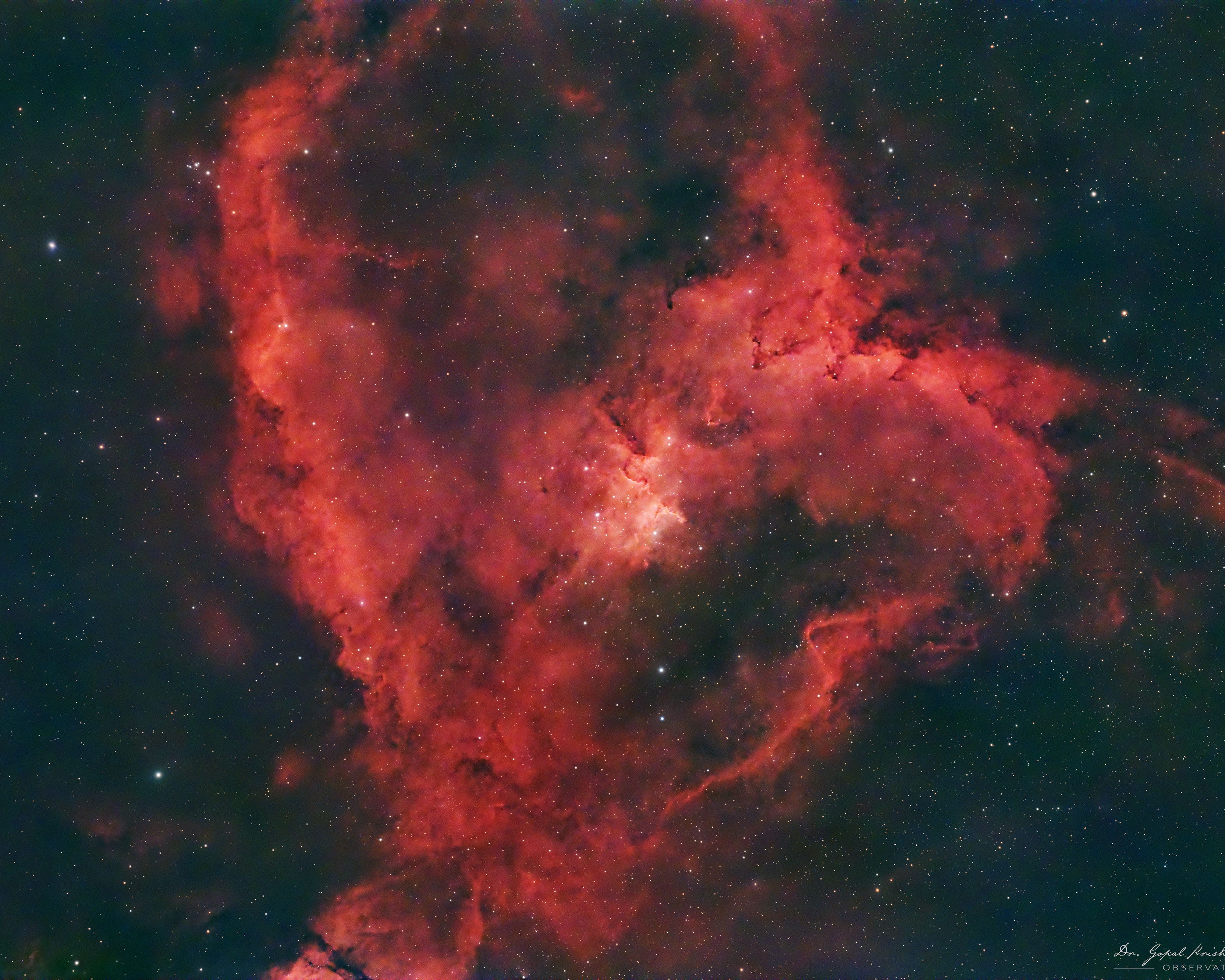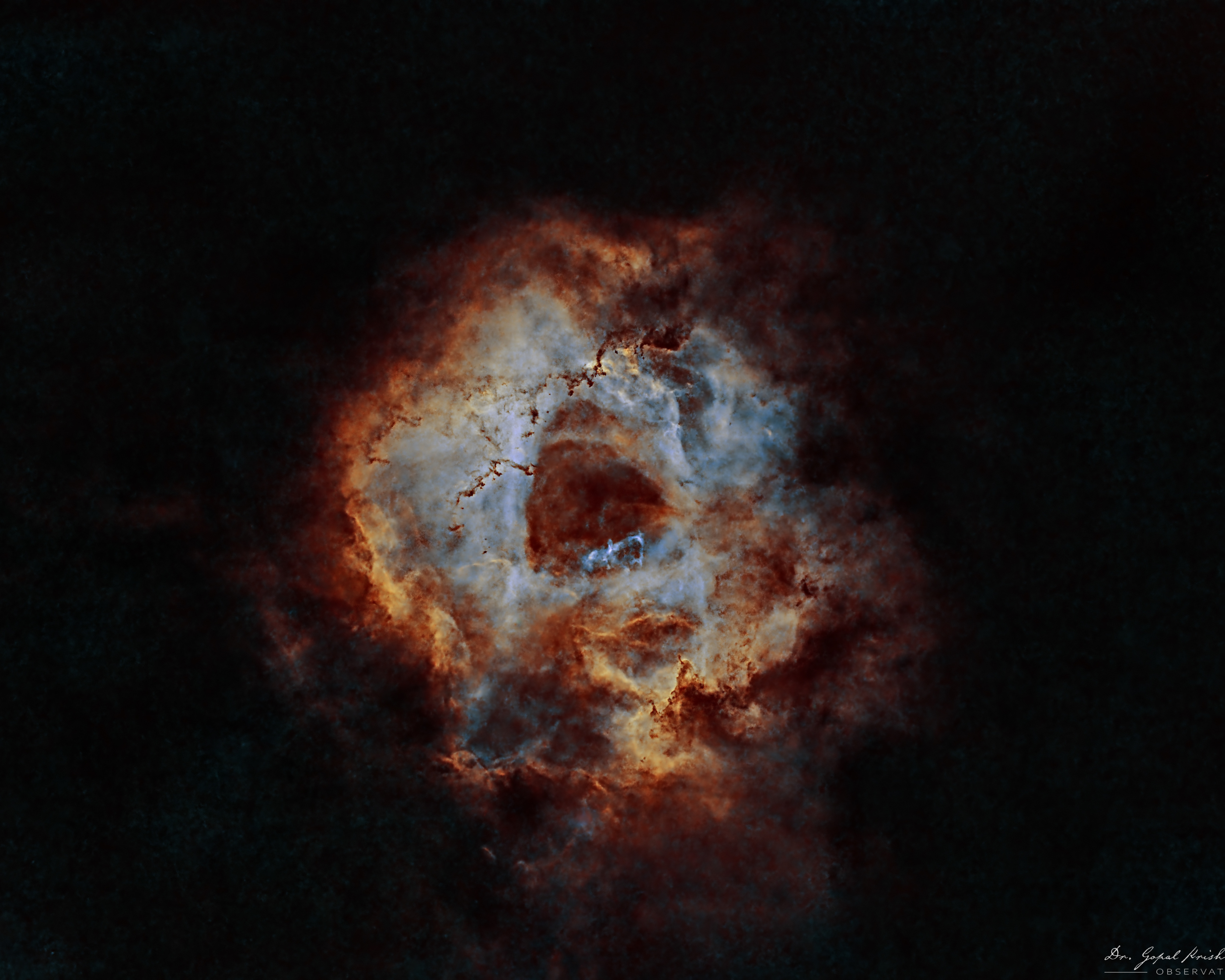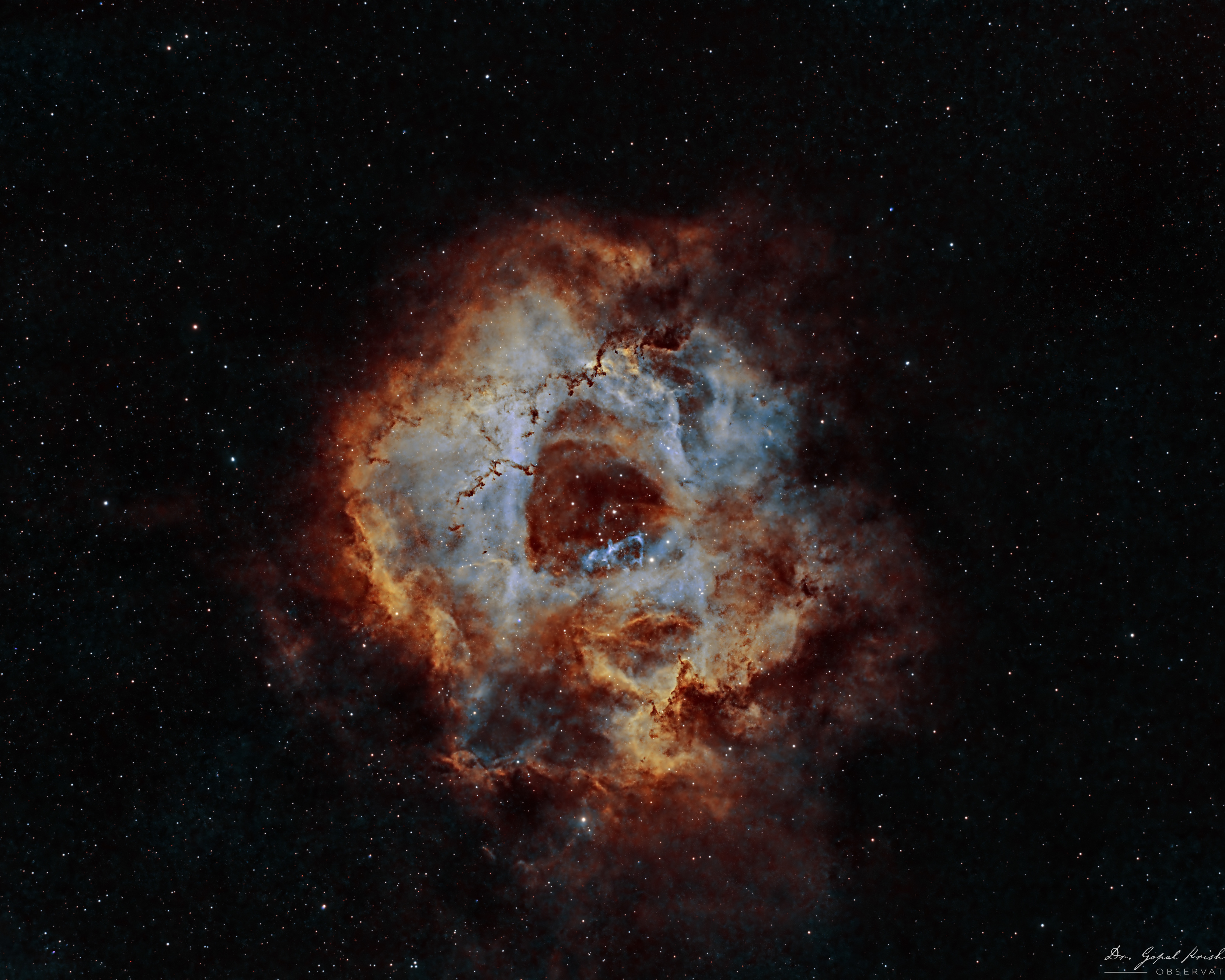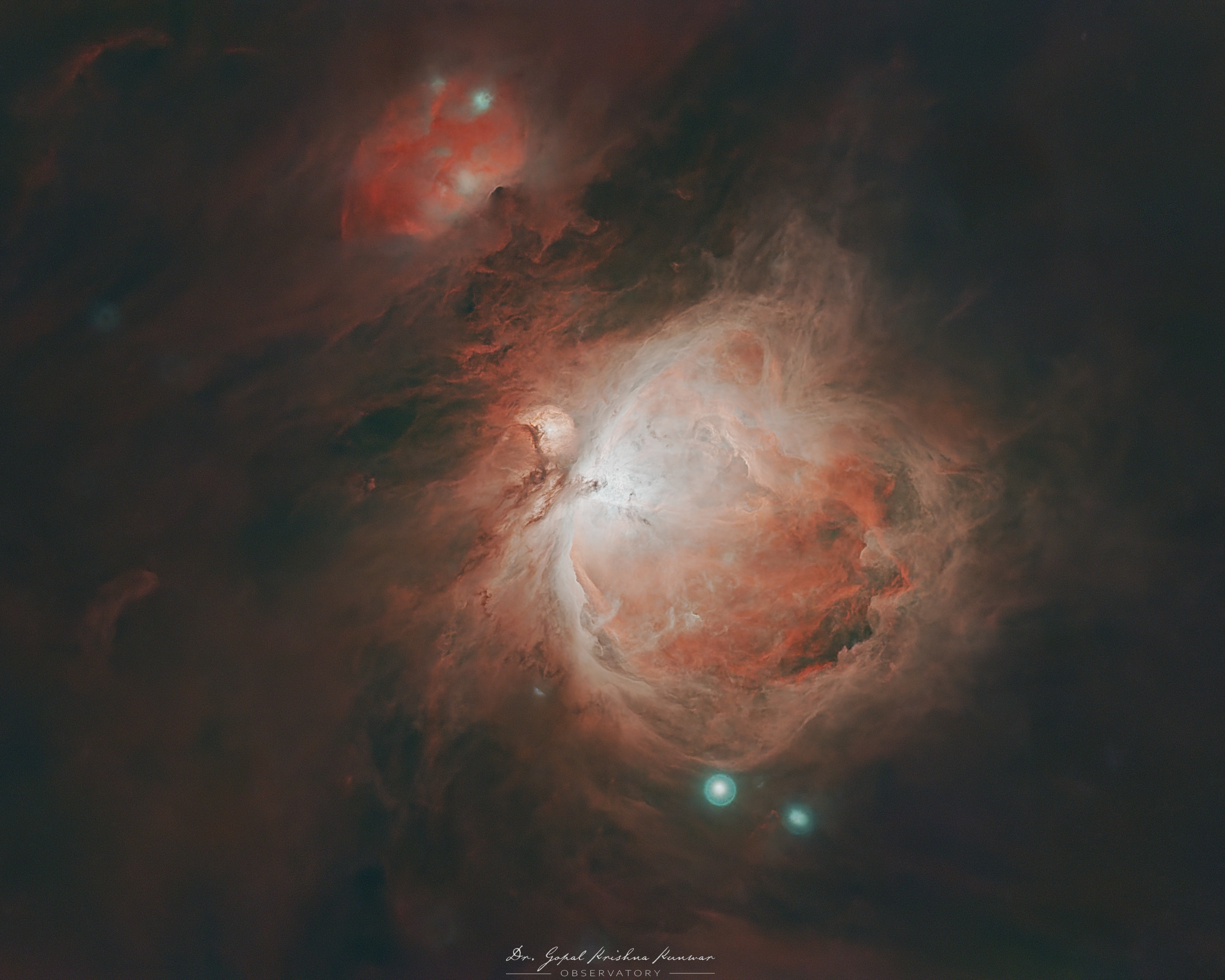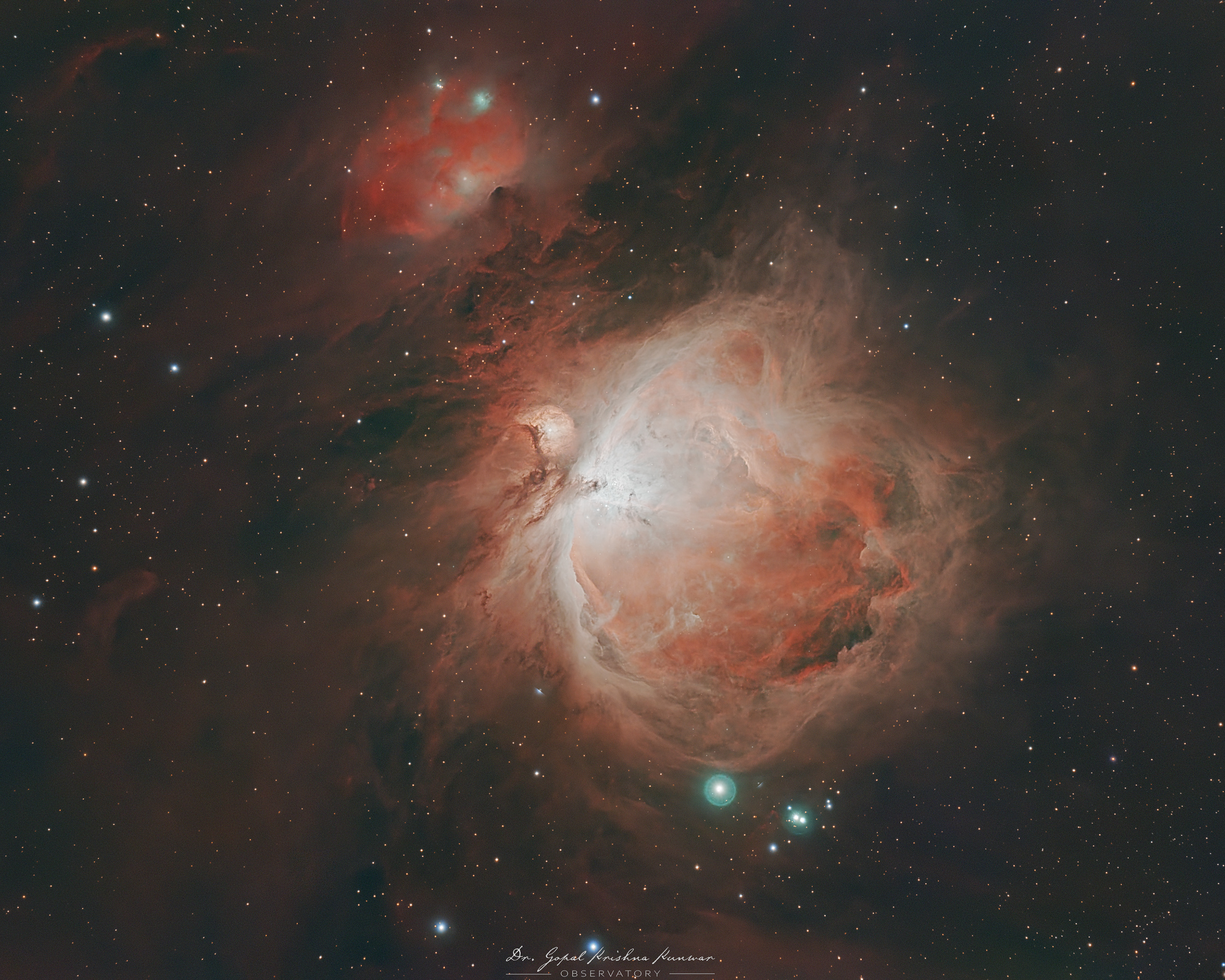The Majestic Seagull Nebula – A Cosmic Avian in Flight
The Seagull Nebula (IC 2177) is a breathtaking expanse of ionized hydrogen gas (Hα), dark dust, and newborn stars that stretches across 100 light-years in diameter. Located approximately 3,800 light-years away, this emission nebula sits at the boundary between the constellations Monoceros and Canis Major. Its distinctive avian shape, resembling a seagull in flight, makes it one of the most recognizable deep-sky objects in this region of the sky.
At the heart of the nebula lies NGC 2327, a compact bright reflection nebula that forms the "Seagull’s Head." This region is home to a massive, young O-type star, which provides much of the ultraviolet radiation that ionizes the surrounding hydrogen gas, causing it to glow in brilliant shades of red. The darker filaments running through the nebula are composed of interstellar dust, which absorbs and scatters light, creating the intricate structures seen in this image. The wings of the Seagull Nebula extend outward, revealing an active stellar nursery where new stars are forming from the surrounding clouds of gas and dust.
The Seagull Nebula: A cosmic bird in flight, painting the sky with stellar beauty.
My Personal Imaging Journey
This image was taken over the course of three nights—Jan 19 (Sunday), Jan 25 (Saturday), and Jan 26 (Sunday) of 2025—from Dr. Gopal Krishna Kunwar Observatory in Bhagalpur. The total integration time for this project was 12.5 hours using the Optolong L-eXtreme filter, which isolates the Hα and OIII emission lines, and an additional 1 hour without a filter to capture the natural RGB colors of the stars in the field.
Initially, I had hoped to collect more data during weekdays, but work commitments took up most of my available time. Even on January 31 (Friday), I planned to gather extra hours, but a series of project calls consumed my evening, and I had to give up on expanding the dataset. Despite this, the collected data was sufficient to bring out the rich details in the nebula’s structure, from the dark dust lanes to the brilliant ionized wings stretching across the sky.
A Race Against Time Each Night
One of the biggest challenges with imaging this nebula was its limited window of visibility. By 2 AM, it would descend too low in the sky, forcing me to switch to a different target. My go-to choice for the second half of the night was the Pinwheel Galaxy (M101), but so far, I haven’t seen great results. Bortle 8-9 skies and my lack of dedicated broadband filters made it difficult to pull out the delicate details of this galaxy with the limited integration time left after Seagull Nebula set. I still hope to revisit M101 under better conditions with proper Luminance and RGB filters in the future.
A ghostly silhouette of the Seagull Nebula—its stars hidden, leaving only the heart of the nebula to shine
Upgrade Considerations – Newtonian or Not?
This nebula was relatively easy to image, given its brightness, but it also made me reflect on my future upgrade plans. I’ve been contemplating moving to a Newtonian telescope to increase my focal length, resolution and lower exposure time especially for galaxies and smaller nebulae. However, my current iOptron CEM40 mount on a tripod may not be stable enough for a larger Newtonian’s size and weight. Moving to a pier-mounted setup would likely be necessary before making the switch. With winter giving way to spring and clearer skies ahead, the temptation to push my imaging capabilities further grows stronger.
For now, though, it’s time to move on to the next target!
Acquisition details:
Imaging Telescopes: William Optics Gran Turismo 71 / GT71 with 0.8x field flattener and reducer
Imaging Cameras: ZWO ASI294MC Pro
Mount: iOptron CEM40
Filter: Optolong L-eXtreme 2"
Other equipment: ZWO ASIAIR Pro, ZWO EAF
Software: Adobe Photoshop · Pleiades Astrophoto PixInsight
Guiding : William Optics 50mm Guide Scope G50ii, ZWO ASI120MM
Total Integration: ~5 hours (3 minute sub-exposures)
Imaging Cameras: ZWO ASI294MC Pro
Mount: iOptron CEM40
Filter: Optolong L-eXtreme 2"
Other equipment: ZWO ASIAIR Pro, ZWO EAF
Software: Adobe Photoshop · Pleiades Astrophoto PixInsight
Guiding : William Optics 50mm Guide Scope G50ii, ZWO ASI120MM
Total Integration: ~5 hours (3 minute sub-exposures)
